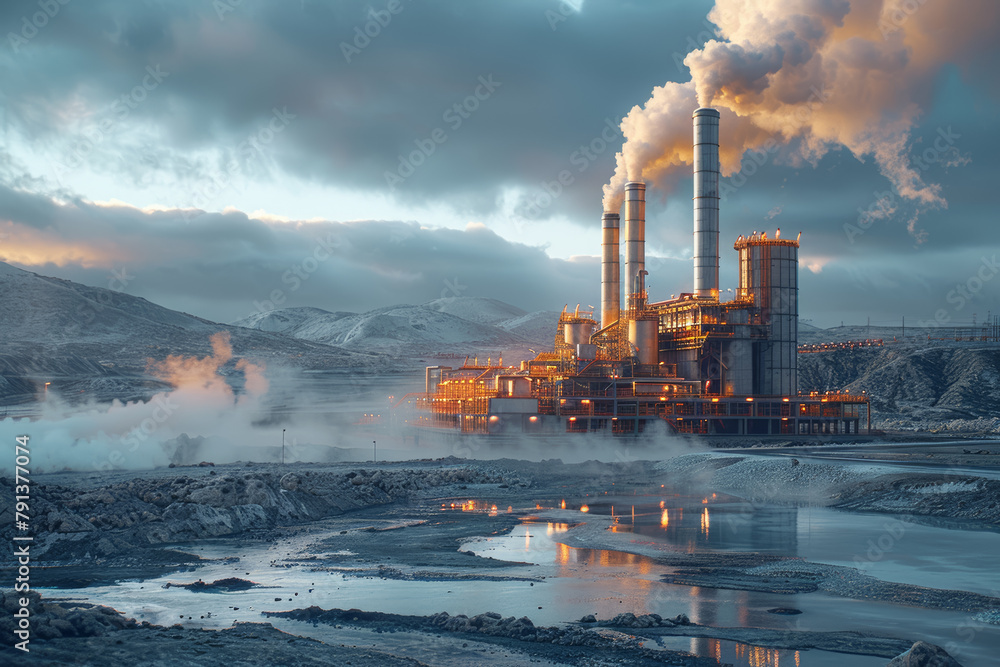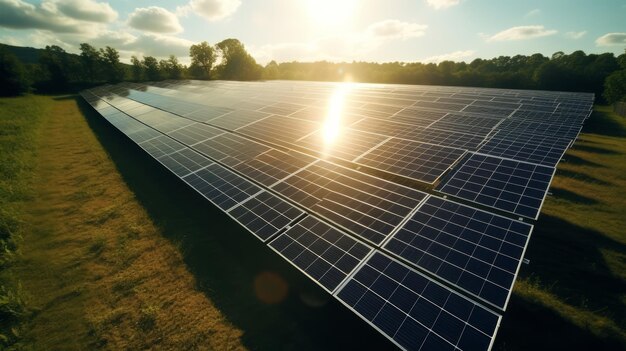
Geothermal Energy: Harnessing Earth’s Heat for Power – A Beginner’s Guide to Sustainable Energy
Imagine an unseen powerhouse throbbing beneath your feet, constantly generating immense heat. This isn’t science fiction; it’s the reality of our planet’s core, and we’re learning to tap into this incredible natural resource to power our homes, heat our buildings, and even cool our spaces. This amazing renewable energy source is called geothermal energy, and it’s playing an increasingly vital role in our journey towards a cleaner, more sustainable future.
In this comprehensive guide, we’ll dive deep into the world of geothermal energy, explaining what it is, how it works, its diverse applications, and why it’s such a powerful player in the renewable energy landscape.
What is Geothermal Energy? The Earth’s Inner Furnace
At its simplest, geothermal energy is heat derived from the Earth. The word "geothermal" comes from two Greek words: "geo" (Earth) and "therme" (heat). This heat isn’t just leftover warmth; it’s a constant, powerful force generated by the slow decay of radioactive particles in the Earth’s core, combined with residual heat from the planet’s formation billions of years ago.
Think of the Earth as a giant, incredibly hot furnace. This furnace generates heat that continuously radiates outwards, warming the rocks and water trapped beneath the surface. In some places, this heat is closer to the surface, creating natural hot springs, geysers, and even volcanoes. These are the "hot spots" where geothermal energy is most easily accessed.
Unlike solar or wind power, which depend on weather conditions, geothermal energy is available 24/7, making it a reliable and consistent source of power.
How Geothermal Energy Works: Tapping into the Underground Heat
The basic principle of harnessing geothermal energy involves bringing hot water or steam from deep within the Earth to the surface. Here’s a simplified breakdown:
- Heat Source: Deep underground, molten rock (magma) heats surrounding rocks and water to incredibly high temperatures.
- Underground Reservoirs: Water seeps down through cracks and porous rocks, gets heated, and then gets trapped in underground reservoirs. These reservoirs contain hot water and/or steam under immense pressure.
- Drilling Wells: Engineers drill wells (similar to oil and gas wells) down into these geothermal reservoirs.
- Bringing Heat to the Surface:
- In some cases, the pressure is so high that hot water or steam naturally rushes up the well.
- In other cases, pumps are used to bring the hot fluid to the surface.
- Energy Conversion: Once at the surface, the hot water or steam is used to generate electricity or directly provide heat.
- Re-injection: After its heat is used, the cooled water is often re-injected back into the Earth. This process helps to replenish the reservoir, ensuring its long-term sustainability, and avoids depleting the underground water supply.
Applications of Geothermal Energy: More Than Just Electricity
While generating electricity is a significant application, geothermal energy is incredibly versatile. It can be used for various purposes, broadly categorized into three main types:
1. Geothermal Power Plants (Electricity Generation)
These plants convert the Earth’s heat into electricity. There are three primary types of geothermal power plants, each designed to work with different temperatures and pressures of geothermal fluid:
-
Dry Steam Power Plants:
- How they work: This is the oldest and simplest type. They directly use steam from the Earth to turn turbines, which then power generators to produce electricity.
- Where found: Only possible in areas with very high-temperature, high-pressure steam reservoirs, like The Geysers in California, the largest dry steam field in the world.
- Think of it like: A giant kettle boiling water into steam, but the Earth is the kettle!
-
Flash Steam Power Plants:
- How they work: These are the most common type. Hot water from the reservoir, often over 360°F (182°C), is pumped under high pressure into a "flash tank." When the pressure suddenly drops, some of the hot water "flashes" (rapidly turns) into steam. This steam then drives a turbine, generating electricity. The remaining hot water is either flashed again or re-injected.
- Think of it like: Opening a soda bottle – the sudden pressure drop releases gas (steam in this case).
-
Binary Cycle Power Plants:
- How they work: These are newer and more efficient, especially for lower-temperature geothermal resources (as low as 225°F or 107°C). Instead of using steam directly, the hot geothermal water heats a separate "working fluid" (like isobutane or pentane) that has a much lower boiling point than water. This working fluid turns into vapor, which then spins a turbine. The geothermal water never comes into direct contact with the turbine, and both the working fluid and the geothermal water are re-injected into the Earth in a closed-loop system.
- Think of it like: A heat exchanger – one liquid heats another, without mixing. This opens up many more locations for geothermal development.
2. Direct Use of Geothermal Energy (Heating & More)
In many places, geothermal resources aren’t hot enough to generate electricity but are perfect for direct heating. This is often more efficient as it avoids the conversion losses involved in electricity generation.
- District Heating Systems: Hot geothermal water is pumped through a network of pipes to heat multiple buildings (homes, offices, schools) in a city or town. Iceland is a prime example, where a significant portion of its capital, Reykjavik, is heated this way.
- Space Heating for Buildings: Individual homes or commercial buildings can directly use geothermal water for heating, often through radiant floor systems or radiators.
- Greenhouses: Geothermal heat provides ideal growing conditions for plants, especially in colder climates, allowing for year-round production of fruits, vegetables, and flowers.
- Industrial Processes: Geothermal heat can be used in various industrial applications, such as drying agricultural products, pasteurizing milk, and timber processing.
- Aquaculture: Heating fish farms to optimize the growth of fish and other aquatic organisms.
- Spas and Hot Springs: The most ancient and well-known direct use, utilizing naturally occurring hot springs for bathing and relaxation.
3. Geothermal Heat Pumps (GHPs) for Homes and Businesses
Geothermal heat pumps are different from power plants or direct-use systems. They don’t rely on high-temperature geothermal reservoirs. Instead, they take advantage of the Earth’s stable underground temperature, which remains relatively constant year-round (around 50-60°F or 10-16°C) just a few feet below the surface.
- How they work:
- Heating in Winter: A loop of pipes (buried underground, either horizontally or vertically) circulates a fluid. In winter, this fluid absorbs heat from the warmer Earth and carries it into the building. A heat pump then concentrates this heat and distributes it through the building’s heating system.
- Cooling in Summer: In summer, the process reverses. The heat pump extracts heat from the building and transfers it into the cooler ground, effectively cooling the space.
- Benefits: GHPs are incredibly energy-efficient, often reducing heating and cooling costs by 25-50% compared to conventional systems. They also have a very low environmental impact.
The Benefits of Geothermal Energy: Why It’s a Game-Changer
Geothermal energy offers a compelling array of advantages that make it a crucial component of a sustainable energy future:
- Renewable and Sustainable: As long as the Earth exists, its core will generate heat. The re-injection of cooled water ensures the reservoirs are replenished, making it a truly sustainable resource.
- Clean Energy with Low Emissions: Geothermal power plants produce very low (or sometimes zero, especially binary cycle plants) greenhouse gas emissions. They don’t burn fossil fuels, significantly reducing air pollution.
- Reliable Baseload Power: Unlike intermittent sources like solar (no sun at night) or wind (no wind on calm days), geothermal plants can operate 24 hours a day, 7 days a week, providing a consistent "baseload" power supply. This makes them highly dependable for electricity grids.
- Small Land Footprint: Geothermal power plants typically require less land per megawatt of electricity produced compared to solar farms or wind farms. The majority of the infrastructure is underground.
- Energy Independence: Utilizing a domestic energy source reduces reliance on imported fossil fuels, enhancing national energy security and economic stability.
- Heating and Cooling Efficiency: Geothermal heat pumps offer remarkable efficiency for heating and cooling buildings, leading to significant energy cost savings for consumers.
Challenges and Limitations of Geothermal Energy
Despite its many benefits, geothermal energy also faces certain challenges:
- Location-Specific: High-temperature geothermal resources suitable for large-scale power generation are not found everywhere. They are concentrated in areas with volcanic activity or tectonic plate boundaries (like the "Ring of Fire"). While binary cycle plants expand possibilities, many regions simply don’t have viable resources close enough to the surface.
- High Upfront Costs: Drilling wells and constructing power plants or large-scale heat pump systems can be very expensive initially. However, the operational costs are typically low, and the long-term savings often outweigh the initial investment.
- Potential Environmental Impacts (Minor):
- Water Use: Some plants require significant amounts of water, although re-injection systems mitigate this.
- Induced Seismicity: In rare cases, injecting or extracting fluids can cause minor seismic activity (small earthquakes), though this is usually very localized and not damaging.
- Gas Emissions (Dry/Flash Steam): While much lower than fossil fuels, some non-condensable gases (like hydrogen sulfide, which smells like rotten eggs) can be released from the Earth, though these are often filtered out.
- Resource Depletion (if mismanaged): If hot water is extracted faster than it can be naturally replenished or re-injected, the reservoir’s temperature and pressure can decline over time. Proper management and re-injection are crucial for sustainability.
- Exploration Risk: Identifying and confirming viable geothermal reservoirs requires extensive geological surveys and exploratory drilling, which can be costly and doesn’t always guarantee a successful find.
The Future of Geothermal Energy: Unlocking More Potential
The future of geothermal energy is bright, with ongoing research and technological advancements aiming to overcome current limitations:
- Enhanced Geothermal Systems (EGS): This cutting-edge technology seeks to create geothermal reservoirs in areas where they don’t naturally exist. It involves injecting fluid into hot, dry rock deep underground to create a network of fractures, allowing water to circulate, get heated, and then be brought to the surface. EGS has the potential to vastly expand the regions where geothermal energy can be harnessed.
- Co-production with Oil & Gas: Exploring ways to extract geothermal heat from existing oil and gas wells, effectively turning old fossil fuel infrastructure into clean energy assets.
- Advanced Drilling Techniques: Innovations in drilling technology are making it easier and cheaper to access deeper, hotter geothermal resources.
- Direct Lithium Extraction: Geothermal brines (the hot, salty water) often contain valuable minerals like lithium, which is crucial for batteries. Combining geothermal power generation with lithium extraction could create an even more economically attractive and sustainable energy solution.
As the world continues to seek reliable, clean, and sustainable energy sources, geothermal energy stands out as a powerful, often overlooked, solution. Its ability to provide consistent baseload power, combined with its minimal environmental footprint, positions it as a key player in the global transition away from fossil fuels.
Frequently Asked Questions (FAQs) About Geothermal Energy
Q1: Is geothermal energy expensive?
A1: The initial setup costs for geothermal power plants and even residential heat pumps can be higher than conventional systems. However, the operating costs are very low, leading to significant long-term savings on fuel and electricity bills, often making it a cost-effective choice over the lifespan of the system.
Q2: Is geothermal energy truly "green" or carbon-neutral?
A2: Geothermal energy is considered one of the cleanest renewable energy sources. Binary cycle plants have virtually zero emissions. Flash and dry steam plants may release very small amounts of greenhouse gases that are naturally present in the Earth, but these emissions are drastically lower (up to 99% less) than those from fossil fuel power plants.
Q3: Can geothermal energy cause earthquakes?
A3: While very rare, some geothermal projects, particularly those using Enhanced Geothermal Systems (EGS) where fluids are injected into rock, can induce micro-seismic activity (tiny, often undetectable earthquakes). These are typically very low magnitude and localized, and careful monitoring and management protocols are in place to minimize any risk.
Q4: Where is geothermal energy most commonly used?
A4: Geothermal power generation is most prevalent in countries located along tectonic plate boundaries or "hot spots" with significant volcanic activity. Leading countries include the United States (especially California), Indonesia, the Philippines, Turkey, New Zealand, Iceland, and Kenya. Direct use and geothermal heat pumps are more widespread globally.
Q5: How long do geothermal power plants last?
A5: Geothermal power plants are very durable and can operate for decades, often 30 to 50 years or even longer, with proper maintenance. The resource itself is sustainable for millennia if managed correctly through re-injection.
Embrace the Earth’s Power
Geothermal energy represents an incredible opportunity to harness the natural power beneath our feet. From providing steady, clean electricity to efficiently heating and cooling our homes, it’s a versatile and vital component of a sustainable energy future. As technology advances, we can expect geothermal energy to play an even larger role in powering our world, demonstrating that sometimes, the greatest solutions lie just beneath the surface.
Want to learn more about how geothermal energy can benefit your community or home? Explore local energy initiatives and resources today!



Post Comment